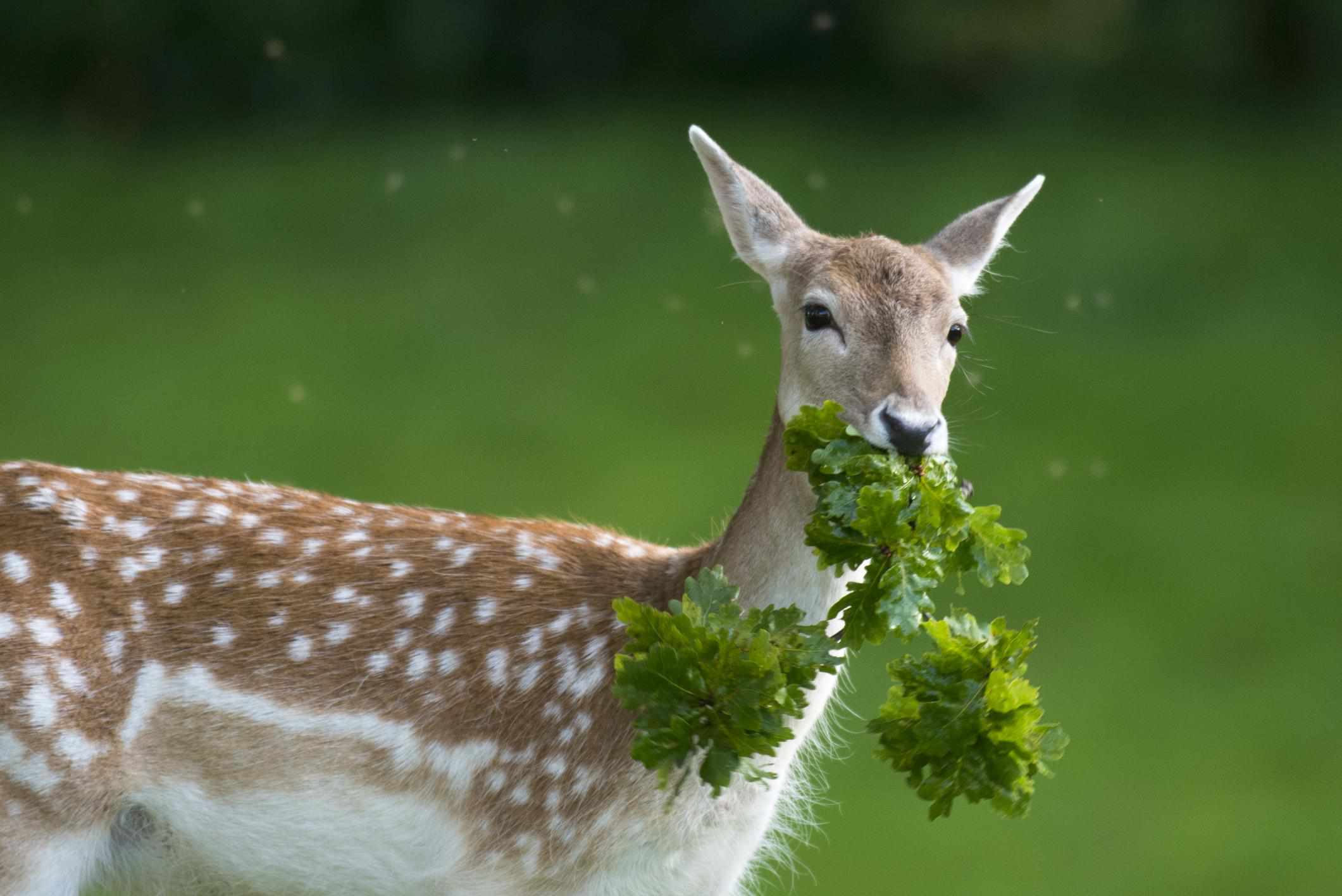Deer gracefully roam our landscapes, but their presence can cause concern for gardeners. Do these gentle giants pose a threat to our prized peonies? This article delves into the relationship between deer and peonies, exploring why peonies are often spared, and offering practical strategies for protecting your blooms.
Decoding the Deer-Peony Dynamic
Peonies are not typically a deer’s first choice. They’re more of a last resort, like the proverbial Brussels sprouts on the dinner plate. Several factors contribute to this:
- Potent Perfume: The delightful fragrance we associate with peonies can be overwhelming for a deer’s sensitive nose, acting as a natural deterrent.
- Unpleasant Palate: Peonies contain compounds that create a slightly bitter taste, generally unappealing to deer.
- Coarse Texture: The somewhat rough texture of peony petals isn’t a pleasant culinary experience for deer, who prefer more tender foliage.
- Potential for Indigestion: While not lethal, peonies contain compounds that may cause mild digestive upset in deer, further discouraging consumption.
However, “deer-resistant” doesn’t equate to “deer-proof.” A hungry deer, especially in areas with large deer populations or during food scarcity (like late winter or early spring), might nibble on peonies.
Why Peonies Often Escape the Deer Buffet
Here’s a closer look at why deer typically avoid peonies:
- Fragrance as a Defense Mechanism: The strong fragrance of peonies serves as a natural repellent for deer.
- Bitter Taste Deterrent: The bitter taste of peonies makes them less palatable to deer who prefer sweeter options.
- Textural Challenges: The coarse texture of peony petals presents a less desirable eating experience for deer.
- Potential Toxicity as a Deterrent: While not deadly, peonies contain compounds that can lead to mild digestive discomfort in deer.
Safeguarding Your Peonies
While peonies are relatively deer-resistant, proactive measures are advisable, especially in areas with high deer populations.
1. Deer Deterrents:
Commercial deer repellents, available in spray or granular form, emit odors that deer find offensive. Regular reapplication, especially after rain, is necessary. Homemade remedies, such as hanging bars of strongly scented soap, are also used, though their effectiveness varies. You will be glad to know that there is an effective way to keep your furry friends safe from ants. Check out the ant insecticide that is safe for pets.
2. Physical Barriers:
Fencing or individual plant cages provide reliable protection. Fencing should be at least eight feet high to prevent deer from jumping over it. Cages should be securely anchored to withstand deer pressure. We have also found a safe solution to deter armadillos from entering your property, read about the armadillo repellent.
3. Companion Planting:
Planting strong-smelling herbs and flowers that deer dislike near peonies creates a natural barrier. Effective options include daffodils, lavender, mint, and marigolds.
4. Strategic Placement:
Planting peonies near areas with high human activity deters deer. Motion-activated sprinklers can also startle deer and discourage them from approaching.
No single method is foolproof, and combining strategies is often most effective. Ongoing research explores new deer deterrents, so staying informed about new developments is beneficial.
Do Deer Eat Peonies in the UK? A Gardener’s Perspective
While deer can eat a wide variety of plants, peonies are not their preferred meal. They’re the gardening equivalent of that slightly odd dish at a potluck – eaten only if nothing else is available. However, this doesn’t guarantee their safety. Hungry deer in the UK, especially during lean times, may nibble on peonies, particularly the tender spring shoots.
Protecting your UK peonies involves understanding deer behavior:
- Strategic Planting: Placing peonies near the house, where human activity is frequent, can deter deer. Well-lit areas also discourage browsing.
- Companion Planting: Strong-smelling plants like lavender, rosemary, and mint can mask the peony scent and create a natural deterrent.
- Physical Barriers: Fences or netting provide a reliable physical barrier against deer.
Even if deer do nibble on your peonies, they are resilient plants. Pruning damaged parts, watering, and fertilizing can help them recover.
Here’s a summary of strategies:
| Strategy | How it Works |
|---|---|
| Strategic Planting | Planting near the house or in well-lit areas deters deer. |
| Companion Planting | Strong-smelling plants mask the peony’s scent. |
| Physical Barriers | Fences or netting physically prevent deer access. |
Deer behavior varies based on factors like local population, available food, and individual deer preferences. Ongoing research continually expands our understanding of these interactions. While complete protection is never guaranteed, taking preventative measures significantly reduces the risk of deer damage.
The Quest for the Most Deer-Resistant Plant
The ultimate deer-proof plant remains elusive. A starving deer will eat almost anything. However, certain plant characteristics make them less desirable targets:
- Size and Texture: Deer prefer young, tender plants. Mature plants with tougher, woodier growth are less palatable. Peonies, with their sturdy stems, fall into this category.
- Scent: Strong fragrances, like those of lavender, rosemary, and sage, deter deer.
- Fuzzy or Spiky Leaves: Plants like lamb’s ear or yarrow are less appealing due to their texture.
Deer preferences also vary regionally. What a deer eats in one area might differ from what it eats in another. This is influenced by factors such as local deer population, food availability, and individual deer preferences.
Here’s a table summarizing deer-deterrent characteristics:
| Characteristic | Why Deer Dislike It | Example Plants |
|---|---|---|
| Strong Scent | Overpowering to their sensitive noses | Lavender, Rosemary, Mint |
| Fuzzy or Prickly Texture | Unpleasant mouthfeel | Lamb’s Ear, Yarrow |
| Tough, Woody Stems | Difficult to chew | Peonies, Hydrangeas |
| Thick Leaves | Less tender and juicy | Hostas (mature plants) |
| Thorns | Painful to bite | Roses, Barberry |
Creating a deer-resistant garden requires a multi-faceted approach. Combining plant selection with physical barriers (like fencing) and deer deterrents (like motion-activated sprinklers or repellents) is most effective. Ongoing research continually reveals new strategies. Remember, even deer-resistant plants can become targets under pressure.
What Animal Likes Peonies? Beyond the Deer
While deer are the primary culprits when it comes to peony damage, other animals might occasionally nibble. The likelihood of deer munching on peonies depends on local deer population and food availability. Ongoing research suggests deer preferences also vary regionally.
Protecting peonies from hungry herbivores requires a multi-pronged approach:
| Protection Strategy | Description | Effectiveness |
|---|---|---|
| Plant Selection | Choose varieties known for their stronger scent and more bitter taste, which deer tend to avoid. | Moderately Effective – Offers some initial deterrent but not foolproof. |
| Deer Repellents | Use commercial or homemade repellents to deter deer. Reapply regularly, especially after rain. | Moderately Effective – Can be effective but requires consistent application. |
| Physical Barriers | Install fencing or netting around your garden or individual plants to physically prevent deer from accessing them. | Highly Effective – Provides a physical obstacle, but can be expensive. |
| Companion Planting | Plant strong-smelling herbs and flowers near peonies to mask their scent and deter deer. | Moderately Effective – Can contribute to an overall deterrent strategy. |
| Motion-Activated Sprinklers | These devices startle deer with a sudden burst of water, discouraging them from returning. | Moderately Effective – Can be effective but may not deter determined deer. |
Some gardeners believe that older, heirloom peony varieties are more deer-resistant due to their stronger fragrance. However, more research is needed to confirm this. Even within a single variety, variations in scent and taste can affect deer preference. Local gardeners and nursery professionals can offer insights into which varieties are most deer-resistant in your area.
Ultimately, protecting peonies requires experimentation and observation. Combining different strategies and staying vigilant significantly reduces the risk of your blooms becoming a deer’s dinner.
- China II Review: Delicious Food & Speedy Service - April 17, 2025
- Understand Virginia’s Flag: History & Debate - April 17, 2025
- Explore Long Island’s Map: Unique Regions & Insights - April 17, 2025

















2 thoughts on “Do Deer Eat Peonies? Protecting Your Prize Blooms from Hungry Deer”
Comments are closed.